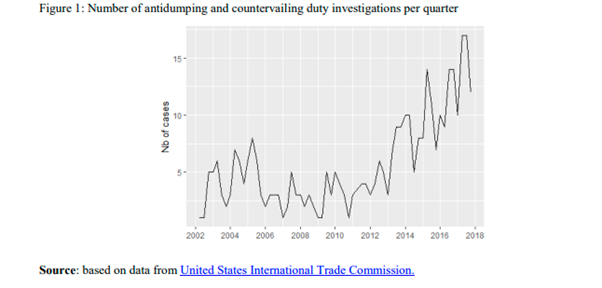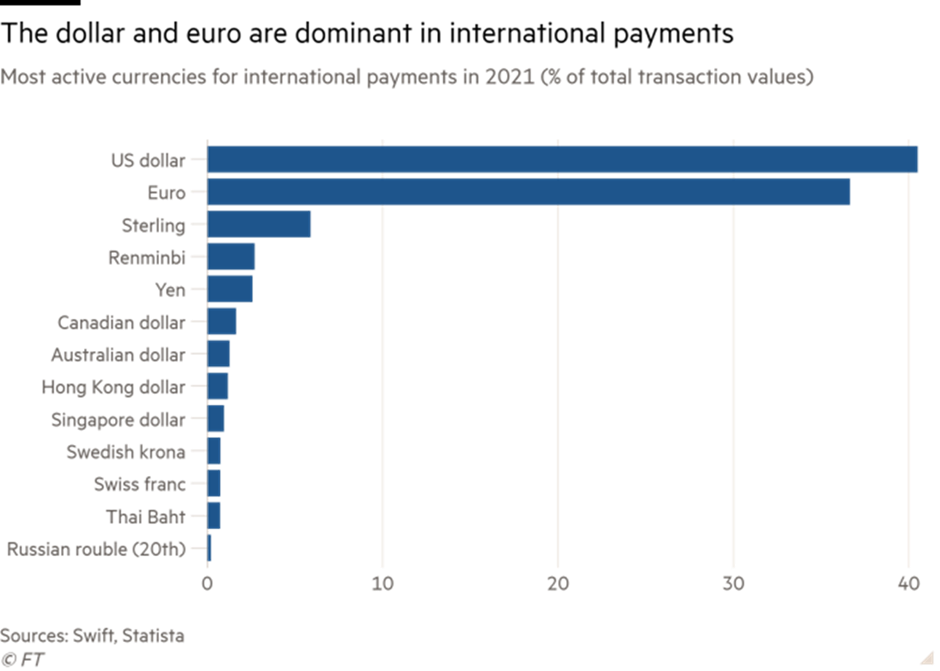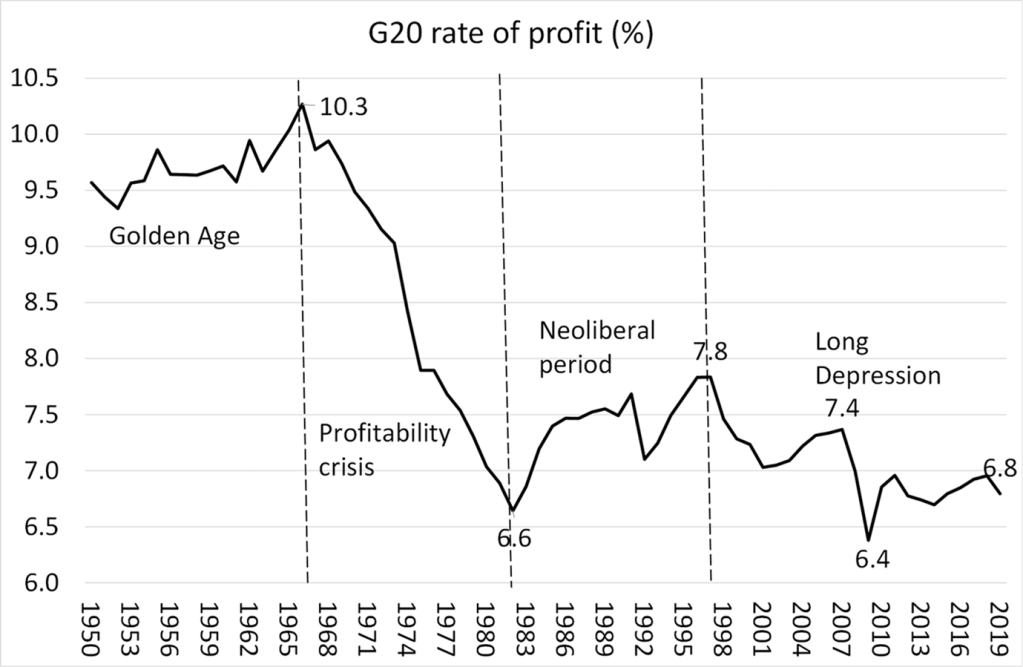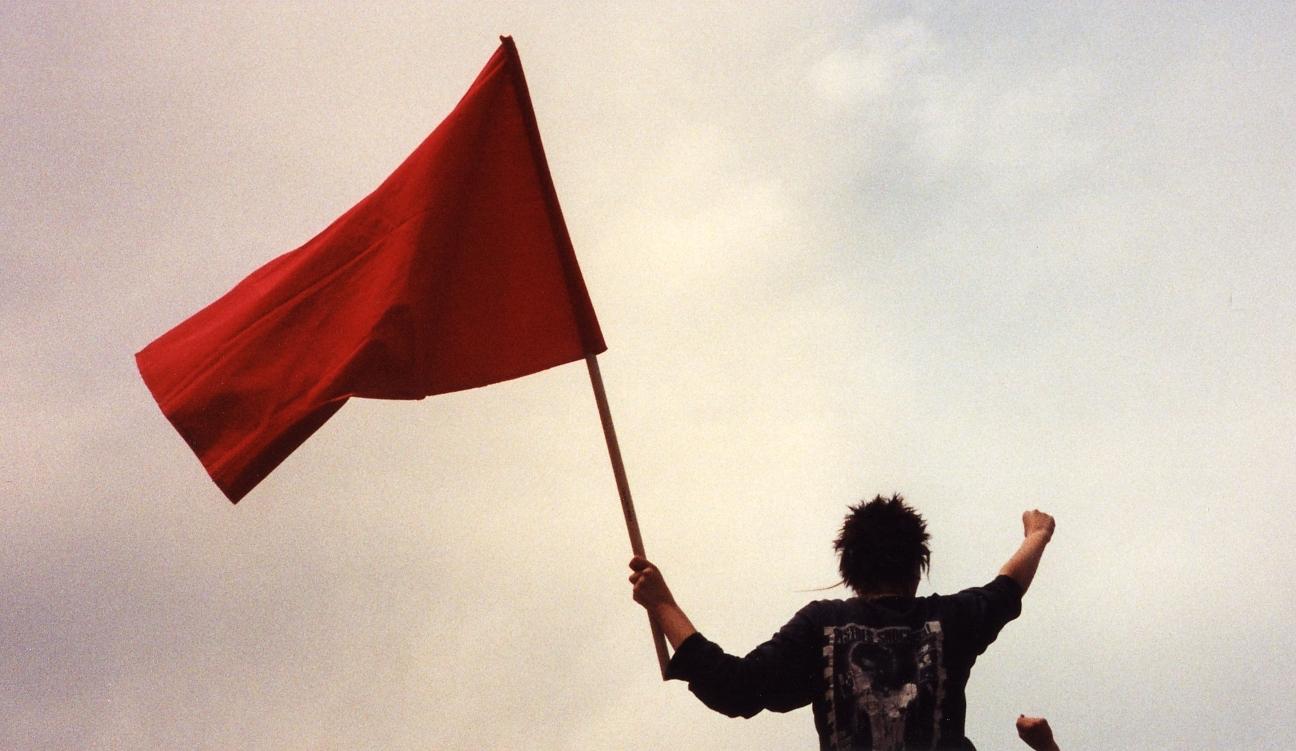
Connie Resch
The US Navy and Climate Change
By Neta C. Crawford
Volume 25, no. 3, Killing in the Name Of
If one were only to read the headlines over the last two years, it might seem as if the US military is late to the problem of climate change. However, as a large emitter of greenhouse gasses (51 million metric tons of CO2 equivalents in 2019 alone), the US military has been researching, anticipating, and planning for the effects of climate change for decades.1 Specifically, their work has focused on how the climate crisis threatens military spending and strategic defense. In my book The Pentagon, Climate Change and War (2022, MIT Press), I describe the history and scale of US military and military industrial emissions. This book traces the growth of both US military dependence on fossil fuels—first coal, then oil—and the effects of that dependence on military industry and foreign policy. I argue that the dependence of the US military on fossil fuels pushed it to acquire bases and assets for refueling and to make alliances with oil producers. Military industrialization also promoted wider industrialization and shaped the US economy to rely on an even greater demand for even more fossil fuels.
In this article, I focus on the role and concerns of one service in the US Department of Defense (DOD), the Navy.2 The Navy has led the US military’s understanding of climate change. Specifically, the US Navy paid for early climate change-related research starting in the 1950s, and even at this early stage had identified the ways that climate change could affect its operations and installations. This research has long been focused on what the Navy believes to be a link between climate change, strategic rivalry, and potential conflict. By assuming that the worst effects of global warming are a fait accompli, the Navy has focused on adaptation and consequence management in the Arctic and elsewhere, rather than mitigation of its emissions.
Funding Climate Change Research
The Navy’s interest in climate science was spearheaded by the scientists it funded to study atmospheric change in the 1950s. Specifically, Roger Revelle, one of the leading climate scientists to document global warming in the 1950s, had served in the Navy for seventeen years before, during, and after World War II. As a Navy Commander, Revelle was involved in documenting the effects of the 1946 nuclear weapons tests at Bikini Atoll during Operation Crossroads on fish and waves.3 After he left the Navy, Revelle became a full time scientist at the Scripps Institution of Oceanography in San Diego.
In 1956, Revelle testified before the US House Committee on Appropriations on the necessity of understanding whether carbon dioxide was causing warming that would “cause a remarkable change in climate.” In arguing for the necessity of the research, Revelle explicitly linked warming to the Cold War competition between the United States and the Soviet Union: “the Arctic Ocean will become navigable and . . . then the Russian Arctic coastline will be really quite free for shipping. . . . This would have the effect, if it does happen, of changing the character of the Russians opposed to ourselves.” Revelle noted that the United States was “now the greatest maritime nation on the earth. . . . If the Russian coastline increases by something like 2,000 miles or so, the Russians will become a great maritime nation.”4
The Navy funded key early scientific work on global warming. In 1957, Revelle’s research, conducted with funding from the US Office of Naval Research, documented rising levels of carbon dioxide in the atmosphere. Revelle and co-author Hans Seuss wrote that, “human beings are now carrying out a large-scale geophysical experiment of a kind that could not have happened in the past nor be reproduced in the future. Within a few centuries, we are returning to the atmosphere and oceans the concentrated organic carbon stored in sedimentary rocks over hundreds of millions of years.”5
Gilbert Plass, whose work was also funded by the Office of Naval Research, contributed several important papers in the 1950s that showed the relationship between CO2 concentration and temperature. “The latest calculations of the influence of CO₂ on the infrared flux show that if the CO₂ concentration in the atmosphere doubles, the average temperature rises 3.6°C, and if it falls to half of its present value, the average temperature falls 3.8°C.”6 Charles Keeling, with funding secured from the National Science Foundation, the US Weather Bureau, and the Office of Naval Research, was able to acquire data from both Mauna Loa, in Hawaii, and the South Pole, which demonstrated that there were seasonal fluctuations and a steady rise in atmospheric CO2.7
The Recognition of Climate Change
For decades, the Navy has stayed on top of global climate science and its implications for operations. In 1990, the same year that the first assessment report of the Intergovernmental Panel on Climate Change was released, a US Naval War College study described “significant effects” of global warming “on the facilities, infrastructures, and operations of the Navy.” The author, Terry P. Kelley, said that changes in the salinity, chemistry, and temperature of water would affect acoustic characteristics of oceans, impacting the performance of sonar—critical for anti-submarine warfare. Indeed, the Navy had already been conducting research on how the speed of sound in water increases with increases in temperature. Kelly also described how changes in ocean currents, high winds, greater turbulence, and the shape and underwater character of coastlines would affect operations. Sea level rise would expand the reach of shallow water, and thus potentially “extend some target beaches 100 km inland,” potentially requiring changing amphibious assault equipment and tactics. Arguing that of all the armed services, the Navy would be most impacted by the effects of climate change, Kelley recommended that the Navy “place itself in the lead for DOD in supporting research and analysis” of global warming and develop a long-term plan to reduce its infrastructure and facilities and redesign its bases and ships to deal with likely challenges.8 Like Kelley, Revelle foresaw potential opportunities for navigation with Arctic ice melting, but also noted the potential for boundary tensions to become severe in areas where the drought and flooding that climate change exacerbated would stress the ability for people to have access to fresh water or to grow food. Kelley warned that climate change would stress the nation’s budget, and with increased political pressure for military spending to be reduced—a “peace dividend”—the DOD “as a whole, and the Navy, in particular, must ensure that the policy formulation, planning, and analysis processes adequately address the impact of global climate change before other sectors take precedence in resource allocation.”9
Thus it is ironic, if foreseeable, that the US military resisted including military emissions reporting in the Kyoto Protocol in 1997. Quite simply, while it knew climate change was underway, and could dramatically affect its operations, the DOD did not want to be subject to possible limits in emissions, which it believed would have to be achieved by cutting operations—including training and exercises. The US negotiators succeeded in acquiring an exception for reporting most military emissions.
Securitization of Climate Change
At the same time, the US military has increasingly focused on the threat that climate change poses to its operations and as a driver of strategic instability. For example, in 2013, US Navy Admiral Samuel J. Locklear III argued that climate-induced instability “is probably the most likely thing that is going to happen . . . that will cripple the security environment, probably more likely than the other scenarios we all often talk about.”10
There is much at stake in the Arctic, including access to undersea fishery and mineral resources, as well as the ability to operate military vehicles in the sea. The national security experts who highlight how the climate crisis will lead to the Arctic sea becoming ice-free worry a great deal about how this will also open up the potential for conflict, or thaw dormant conflict.
In July 2000, the Navy held a meeting at their Naval Ice Center, which recommended the establishment of a commission to analyze climate change in the Arctic. The resulting report on arctic ocean climate change used four models to understand the effects of climate change and found that while all the models predicted a reduction in ice extent and thickness, “some models predict that the Arctic ice will significantly reduce in area and volume or possibly disappear during summer months as a result of increased greenhouse gasses. The sea-ice albedo feedback is used to explain such a scenario. It implies that at warmer temperatures there will be less sea ice in the Arctic, which will allow an increased absorption of solar radiation due to decreased albedo, which will result in even warmer temperatures, and so on.” The report linked the impacts of climate change to their strategic concern of anti-submarine warfare (ASW), and the ability of the US Navy to track the movements of their adversary’s submarines.11 However, later research showed that the US Navy could still operate and maintain its ASW capabilities, even with changes in salinity and temperature. A 2011 report by the National Research Council suggested that if the United States monitored changes in temperature and salinity, ASW would not be affected because the changes were “nothing inherently outside the operating scope of current systems.” Yet, the same report also recommended that the Navy should increase its research in the region and submarine presence in the Arctic because climate change “may” drive US naval forces to conduct operations in the region.12
The Navy’s interest in climate change has not wavered, even through the Trump administration. In October 2021, the Department of Homeland Security (DHS) put the Arctic front and center as an area of increased competition and insecurity. According to the DHS Strategic Framework for Addressing Climate Change, climate change is framed as a catalyst for conflict, which deepens the need for a large and active military presence in the Arctic, even though the military’s carbon emissions may contribute to the Arctic thaw.13
The fires of the past and the fires of the present would bring the fires and the floods of tomorrow. And we have reached tomorrow.
The Navy’s view on climate change as a threat to national security has solidified, from seeing potential challenges to actual challenges. In one recent document on climate change, the Navy says climate change is “a direct threat to mission” and an “existential threat.” In the words of Carlos Del Toro, Secretary of the Navy, “climate change is one of the most destabilizing forces of our time, exacerbating other national security concerns and posing serious readiness challenges. Our naval forces, the United States Navy and Marine Corps, are in the crosshairs of the climate crisis: the threat increases instability and demands on our forces while simultaneously impacting our capacity to respond to those demands.”14
Of course, the articulation of threats often leads to increased preparedness and exercises. This is already happening. The question is whether the Navy is responding appropriately, or if its actions will increase other nations’ perceptions of threat and insecurity, in the Arctic and elsewhere and promote an escalatory spiral of fear, exercises, and more fear, more exercises, and more spending.
The equation of climate change with likely conflict is potentially dangerous for two reasons. First, militarizing a region will likely increase tension, rather than ease it. As the military prepares for conflict around the world, it may unintentionally take sides and fuel regional tensions rather than ease them. Second, equating climate with conflict downplays or sometimes completely ignores the potential for non-conflictual policies, institutions, and outcomes in areas where humans are dealing with climate change-caused instability. For instance, in the Arctic, the issues over access need not be decided by military force.
The Arctic Council, an international institution formed in 1996, is a forum for countries which border the Arctic to alleviate and regulate competition in the region. In fact, it has already been a forum for agreements on scientific cooperation, oil pollution, and search and rescue. Of course, the work of the Arctic Council will be more difficult if states continue to militarize their presence in the Arctic and view each other with increasing suspicion. That is not to say that coming to cooperative agreements about how to use resources in the Arctic is easy.
Tragedy and Opportunity
For most of the last two hundred and fifty years, humans have carried on with making “progress”—industrialization in the service of the good life—assuming that fossil fuels were an essential ingredient in reaping the world we were certain would be better than the one we were leaving behind. Our grand strategy for security took for granted that we would need fossil fuels for industry and fossil fuels for war. Only in the last fifty years or so has it become clear that burning all that fuel, and at the same time destroying the forests and the wetlands that take up the carbon released by the fire, is not just leaving that past behind, but destroying the possibility of preserving what is increasingly, in essential life-giving respects, understood as a better world. As Hannah Arendt once said, “the road to hell may just as well be paved with no intentions as with the proverbial good ones.”15
Many of our leaders—scientists, policy makers, and the captains of the fossil fuel industry—have understood, however, that the fires of the past and the fires of the present would bring the fires and the floods of tomorrow. And we have reached tomorrow. It is now. We appear to be stuck in the quicksand of climate change insecurity. Our greenhouse gas emissions—the by-product of generating power made in the service of our physical and material security; power which provided generations with prosperity and a measure of independence from the elements—guarantee that future generations will suffer greater insecurity as the elements become less hospitable for human and all other life.
The military has understood the science and the consequences of global warming quite well for decades. They paid for much of that research. National security strategists have sounded muted alarms, the Pentagon has adapted some of their equipment and operations, and experts have imagined scenarios of increasingly dire complex emergencies, catastrophes, and climate change caused wars.
Faced with the incontrovertible reality of climate change, Pentagon leaders have been farsighted and tactically flexible. They have responded to climate change with adaptation and preparedness for all sorts of scenarios, including war.
And yet at the same time, the Pentagon has been strategically inflexible and blind. For the most part, the armed forces and our political leaders have not put away the tools and the habits of mind that got us here in the first place. The US grand strategy for national security has not fundamentally changed. In some ways it can’t, because it is premised on the anticipation and fear of war: the idea that for us to be safe, we have to be prepared to meet every threat anywhere at any time with overwhelming force. It is premised on the idea that force works, that the threat of coercion and the actuality of destruction can get us what we want.
So once we believe those things—that war is possible and maybe imminent, that we must have a capacity to make war that far exceeds our enemies’ abilities, and that coercion and destruction are effective—it seems that the only way to deal with the threat of climate change caused war is to prepare for more war. Of course, in preparing for more war, governments give the armed forces everything they need: money, weapons, people, bases, and fossil fuels. We protect and defend the oil that we think we need to defend ourselves. We treat arms makers well, because they supply the weapons that we think will keep us safe. We put bases all over the world, either at the destinations that we want to defend or elsewhere, as stepping stones and refueling stations to facilitate access to those places. At the same time, while we are making our weapons more energy efficient and the installations more resilient, we scarcely question whether this war is inevitable or whether it is in fact made more likely by American military bases and the fuel it costs to be the most powerful nation on the earth.
The Way Ahead: Toward Human Security
In the late 1990s, as the Kyoto Protocol was being negotiated, United States political leadership had a choice to make. In 1997, the DOD warned the White House of the dire consequences that could flow, not from global warming, but from the Kyoto Protocol. They said that “imposing greenhouse gas emissions limitations on tactical and strategic military systems would . . . adversely impact operations and readiness.” The DOD said that a 10 percent cut in fossil fuel use would reduce the US advantage in tactics and training, which would then diminish US combat effectiveness. If the Air Force would cut 210,000 flying hours per year, fighter and bomber crews would “be unable to maintain full combat readiness,” and a 10 percent cut would also reduce air lift and aerial tanker capacity.16 They concluded their argument this way: “While global climate change may be a serious threat to the nation’s long-term interests, there are other threats we must not forget. We must not sacrifice our national security or our ability to offer humanitarian assistance to those in need to achieve reductions in greenhouse gas emissions. We must not see this as an issue of being able to achieve either national security or protection of the global climate. The United States must pursue both objectives.”17 In the last sentence of its background paper, the DOD argued that, “to accomplish this, DOD strongly recommends that the United States insist on a national security provision in the climate change Protocol now being negotiated.”18
The US military and government more broadly has understood security as protecting national borders and the capacity to intervene outside them to shape world events. Decision-makers want the capacity to project power everywhere, any time, to preserve US global military dominance and to protect its economic interests. Just as the fossil fuel industry benefited from government-supported research on fossil fuels, military industries benefited from the research and development paid for or subsidized by the federal government, and cost-plus contracts that guaranteed a profit. If oil was vital for war and for the military industry that armed and supplied the military forces that were to protect the United States and its allies, then oil itself must be protected. And as after World War I, in the post–World War II and Cold War era, the demand for oil accelerated the drive to control the Middle East for bases, alliances, commercial arrangements, and increasing arms transfers to regimes that the United States hoped would be friendly to US interests and fight regional threats. During the Cold War, the conventional military was supplemented by a nuclear arsenal, the building of which required even more industrialization and conventional power. To the extent that this national security framework has been dominant, it impedes our ability to break out of the deep cycle of fossil fuel energy consumption, assertive military doctrines in service of the industrial and military systems that depend on that consumption and conflict.
The need to protect oil promotes higher military spending, and in turn, higher military spending promotes a fossil fuel intensive economy. Indeed, it remains hard to reduce military industry and the armed forces because many people believe that high levels of both yield security, economic growth, and well-paid jobs. Further, since World War II, US Congress has tended to keep military spending up to “a persistent baseline of funding, regardless of whether or not the nation was engaged in a war.”19 This is in part because the DOD often makes multi-year contracts for procurement that extend beyond the authorization for a particular fiscal year and also in part because the infrastructure and personnel of the US military vary little in size from year to year.
This is the familiar path, rooted in deep cycles of consumption, fossil fuel demand, military forces to protect access to fossil fuels, increasing utilization of fossil fuels not only for power but for plastics and industrial agriculture, fear of loss of access to oil, and back again, recursively, to ever higher levels of fossil fuel use and emissions.
Leadership in the United States could have chosen to think differently about security in the late 1990s. It still could. The alternative path is focused on human security, which itself depends on ecological security. Ecological security, the health and well-being of the biosphere, makes all life possible. Human security is understood as people secured from the actual and potential effects of a dramatically warming planet not by military force, but by an investment in ways of growing food that do not depend on deforestation and nitrogen-based fertilizers, in modes of transportation that do not depend on petroleum. If human security was the lens, climate change migrants from outside our borders would be understood not as a threat but as people who have been pushed out of their homes by the same droughts, fires, and floods that are also hurting many people in the United States and Europe. The most vulnerable are asking for help in dealing with the consequences of choices that they themselves did not make, but which have put their lives and livelihoods in jeopardy nevertheless.
—
Neta C. Crawford is the Montague Burton Professor of International Relations at University of Oxford and author of The Pentagon, Climate Change, and War (MIT Press, 2022), Accountability for Killing (Oxford University Press, 2013), Argument and Change in World Politics: Ethics, Decolonization and Humanitarian Intervention (Cambridge University Press, 2002), among others.
Notes
The post The US Navy and Climate Change appeared first on Science for the People Magazine.










 Connie Resch
Connie Resch